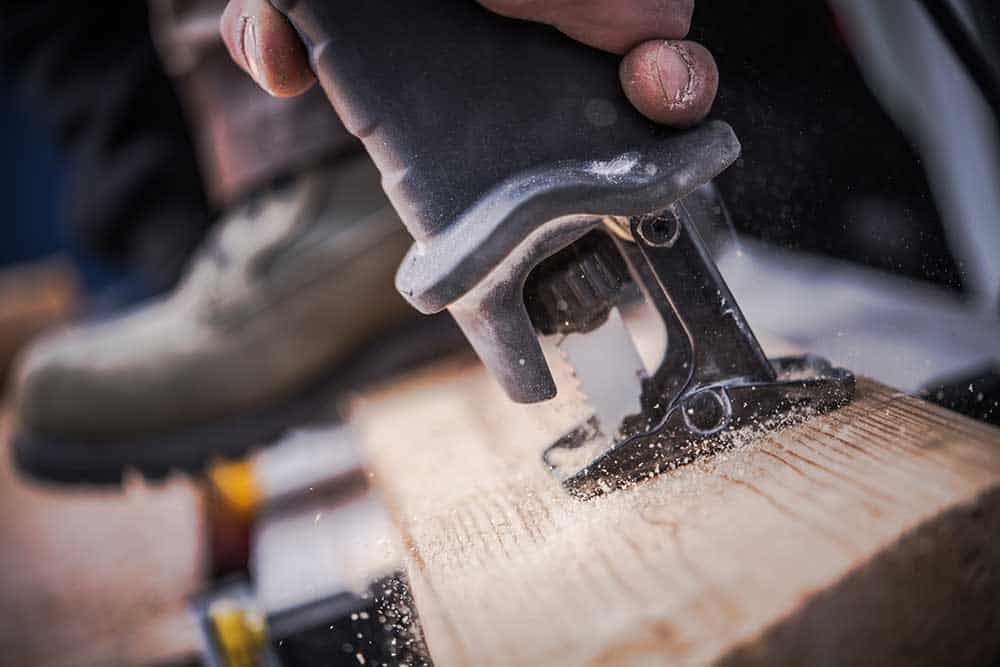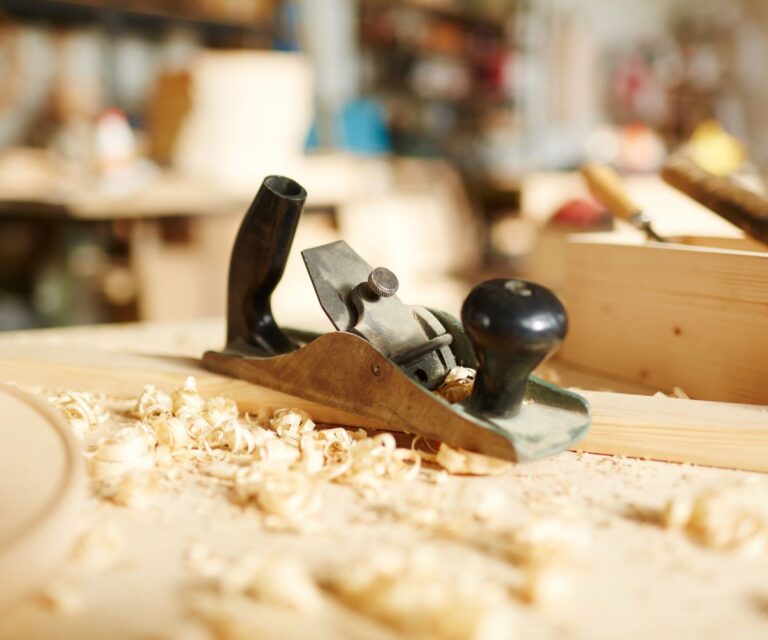How to cut straight with a reciprocating saw easily? Find out!
As an Amazon Associate I earn from qualifying purchases.
For cutting a straight line, I always prefer to go with a reciprocating saw. It is easy to use and gives you a perfect holding position in most of the situation. You can use it on those conditions where others saw can’t perform.
Using a reciprocating saw is not that difficult, like solving a puzzle; you need to choose the right blade for the right work, make solid visible lines you’re going to cut, then hold the saw right way and rock-solid so that your saw doesn’t slip. After that, the Final step, start your saw and finish with the perfect straight cut.
To make the overview easier for you, I’m describing the techniques by points. Here, I will try to point out every vital fact and a detailed guideline on cutting straight with a reciprocating saw.
Contents
The primary guideline of cutting:
You may know reciprocating saw as well as Sawzall or jigsaw. For cutting a proper straight cut with the reciprocating saw, here are the basic guidelines for cutting.
- Clamping or gripping is very important in reciprocating saw cutting. It does not require manually push through the plank. So, it needs to be handled delicately. That’s why proper gripping of the plank is very important. So, you should clamp the plank or specimen with a c-clamp for proper grip and then you should perform the cut.
- After clamping for safety measures, the rail of the fence should be kept in rest on foot support.
- Maintaining the pressure in the rail will make the cut easier and efficient a foot with a flat edge would be the best.
- To make the best straight cut, you must lock down the fence rail according to the edge which is desired to be cut.
- You must avoid any unpleasant movement of the plank or fence rail because it will cause rough cuts and also the straight cutting line will not be maintained.
- Blade’s upper portion or head of your saw is set up on the edge. When you are cutting through timber, first ensure the foot is resting on the edge properly along the fence rail.
- To maintain a perfect cutting pressure, it is essential to ensure a flat edge of the specimen.
Why Making the Visible Line is Important
Line of visibility is vital in reciprocating saw cutting. If you do not mark any visible line, then you have to cut the specimen with an assumption.
Most of the time it will do the job, but sometimes you’re looking angle would not be perfect and you will not be able to produce a straight cut.
Besides being a beginner in this field, you must need a cutting line for the proper cut. First, make a visible line with measuring tape and permanent marker in the place which is going to be cut.
Cut straight line on a Horizontal surface:
I already have discussed the basic rules on cutting. So here I’m not going to describe broadly. I’ll focus on the point and try to make it short and clear.
- First, use clamps on fence rail tightly for avoiding any movements and too much vibrations.
- Finish all the measurements and mark the visible line you’re going to cut.
- Adjust the pivoting shoe and see is there any uneven surfaces or not then bring it back to the start position and prepare it for the final task.
- The flat edge foot will guide you cut without missing the visible line you make.
- Don’t make it too hard and put massive pressure. More pressure means more vibration. Make it simple to let the machine work.
Cut straight line on a vertical surface:
The main technique of cutting straight of a horizontal surface is used in this case. But here you must have to choose the right blade and right gripping positions to perform the straight cut of a vertical surface. Some important points are:
- In horizontal cutting, we place the object in a c-clamp, but we will make the object stand with the wall and fit the rail fence on the wood screw.
- The fence screw needs enough supporting capacity and power for this task. So your saw can’t slip out from the holding surface.
- In case you need straight cut fir making boxes or holes you can apply the same cutting method. But it would be best if you remembered that the stand must be thick enough for the proper support.
Some Accessories to cut straight with a reciprocating saw
External handle-grip:
The external handle grip is used to overcome the vibration produced by the saw. It is an essential attachment to maintain the recoil and perform an excellent straight cut.
There are also handles which are known as anti-slip handles. These are very good for perfect grip so that any unpleasant accident would not occur.
Lighting Facilities:
For proper lighting facilities, there are some led lighting devices which can be attached to the saw. It helps when you will be working around the corner or something like that, and there is not sufficient light source.
Pivoting Shoe attachment:
Adjustable pivot is very needed in reciprocating saw operation. Often there will be uneven surfaces. Then you have to adjust the pivot shoe of the saw. This attachment will allow you to the maximum adjustable limit. Some attachments are even able to extend the teeth of the blades.
Four-position blade Clamp:
There is also a popular attachment named the four-position blade. This device allows the blade to fit in a total of four positions. Different position creates different line of the side which gives different visibility by which you can make a straight cut very easily
Speed Controlling Gauge:
The cutting technique must depend on the size of the object you want to cut. That’s why to cope up with different objects, you must need different variations of cutting speed so that you could maintain the straight cutting line and also able to handle the vibration and blade durability.
Besides high-speed cutting finish is not so well furnished, but cutting at low speed should give you the touch of perfection. So, this speed controlling device is very beneficial for straight cutting. It is attached in the controlling panel.
Types of Blades:
As blade is the sharp material used for cutting so it plays very important role. There are some variations of the reciprocating saw blades. This variation is determined by the amount of teeth there is in the blade per inches.
Mostly reciprocating saw is used in wooden objects so there doesn’t need that much of variation. But if the object metal changes then to cope with the brutality of the metal blade, it must be changed to get a good and straight cut.
Some Safety Measures during Cutting Operations:
Reciprocating saw is a very hazardous and risky tool to use, though it is very effective in cutting field. So, you must have some essential safety measures to obtain for the sake of your well.
- Disconnect the saw from the electricity supply when you’re going to change the attachment. So, there will be no chance that the saw would start accidentally.
- The saw blade is very sharp we have to handle it carefully, and after doing the job, we must store it in a safe position.
- You must have protective hand gloves which have good hand grip and wear safety glasses and helmets before cutting operations.
- Start the machine slowly then gradually increase the speed the motor of the reciprocations saw. So, it will be easier for you to control the vibration and mechanical shock in your pair of hand.
FAQs
What are the other saws you can use to cut straight?
Well, there’re some handy alternatives that you can use instated of a reciprocating saw. But there is some limitation because of portability. Some alternatives you can’t use outside because they are not portable like reciprocating saw. The alternatives are-
Table Saw
Circular Saw
Miter Saw
Jigsaw
Scroll saws
You can use jigsaws with bigger blades according to your needs, and in this case, you have portability. For intricate jobs, jigsaws and scroll saws can be a handy option and fulfill your requirements as an alternative.
How thick can a reciprocating saw cut?
Heavy-duty blades need to be 7 to 8 inches wide and 0.062 inches thick. Blades with 0.035 inches thickness can provide strength for standard cuts 0.05-inches thick provide enhanced stability. So depending on this calculation, you need to identify which thickness blade suits you.
Can you cut plastic and steel with a reciprocating saw?
Yes, you can cut plastic, steel, and other materials also.
What other materials you can cut through a reciprocating saw?
The Reciprocating saw is and handy tool and can cut through almost all types of platforms. It can cut wood, metal, drywall, plaster, fibreglass, composite materials, and more. The trick to a successful cut is using the best sort of blade for the material you are cutting.
Conclusion:
If you know the hacks and the techniques than using a reciprocating saw are super easy. You just have to follow the steps that are mentioned earlier.
Choosing the right blade for the right operation is also an essential matter. Even following the proper way is necessary for cutting straight lines. I hope you get your solution and if you’re, I’ll be delighted.
Thank you.





